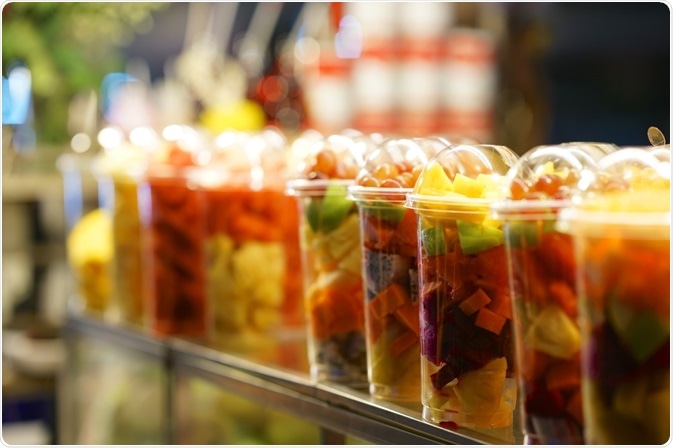The novel properties of nanomaterials and nanoparticles are increasingly being applied to develop and improve existing food packaging, with enhancements to thermal and mechanical strength, gas-barrier effectiveness, and antibacterial properties.
However, recent advancements have led to some concerns regarding the use of nanoparticles in food contact materials, due to a lack of knowledge surrounding toxicity, safety, and environmental impact.
 Pe Dra | Shutterstock
Pe Dra | Shutterstock
Why use nanoparticles in food packaging?
Food packaging is commonly made from polymers, and mixtures of organic and inorganic nanoparticles can be added as fillers, often configured into geometric shapes such as fibers, flakes, or spheres. Using a mixture of sizes and shapes of filler particles reinforces the structure of the polymer, with larger size differences between the largest and smallest particles providing the greatest reinforcement. Materials such as graphene, silica, nanoclay, silver, and carbon nanotubes are extensively used as filler.
The high surface energy of inorganic nanoparticles, made from materials such as silver, gold, zinc oxide and titanium dioxide, allows them to act as antimicrobial agents. They commonly work by disrupting the cell membrane. This improves the potential storage time of the food and improves sensitivity to storage temperature, since bacteria and fungi thrive in warmer temperatures.
Nanoclays in large aspect ratio shapes improve the gas and moisture barrier of polymers, while also acting as oxygen scavengers. This further lowers the survivability of microbes within the packaging, restricting access to oxygen and water.
The highly customizable surface chemistry and physical properties of nanoparticles also allow them to act as sensors, indicating the oxygen level, past temperature, and the presence of pathogens or contaminants, among other properties. For example, gold nanoparticles may be used to indicate the temperature-history of a product.
Gold nanoparticles of between 5-30 nm are red when in a colloidal sol. However, the growth of ice crystals when frozen pushes the nanoparticles together and leads to irreversible aggregation, and so loss of the red color. This type of packaging sensor has applications for dairy, fruit, and vegetable products.
Do nanoparticles migrate to food?
Studies have shown that silver nanoparticles embedded into polypropylene plastic containers, in order to imbue them with antibacterial properties, do migrate in small quantities into food stored in these containers. The rate of migration depends heavily on the composition of the plastic container.
Are nanoparticles dangerous?
Depending on their size, shape, and surface chemistry, some types of nanoparticles show large levels of bioretention, and may accumulate to potentially unsafe levels within the body. Many are able to penetrate cell membranes and generate reactive oxygen species in their vicinity, leading to cell damage.
However, just as with any regular chemical additive present in food packaging, regulatory bodies have placed limits on the quantity of nanoparticles that may be leached from packaging and still be legally sold, and current levels are not thought to be toxic.
Nanoparticles likely to be employed in food packaging will have been considered for use in terms of safety before any other factor, and mouse-models show no acute toxicity.
Further Reading